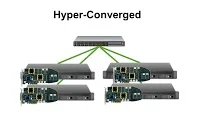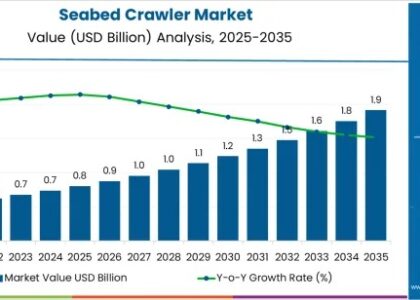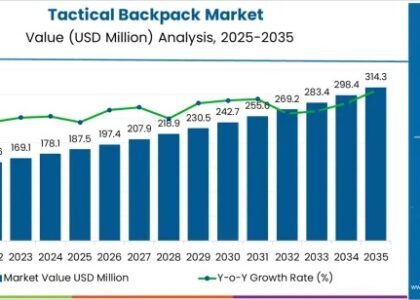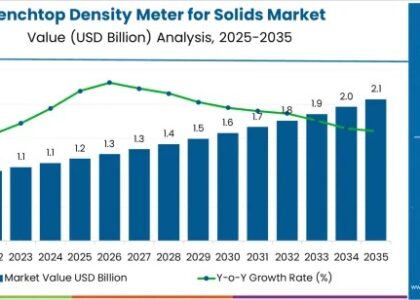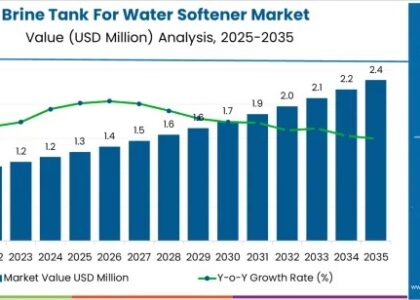The hyper-converged systems market is expected to grow at a high rate between 2025 and 2035, based on the rising need for scalable and efficient IT infrastructure. It is anticipated that it will go from USD 24.6 billion in 2025 to USD 162.5 billion in 2035, with a CAGR of 25.8% during the forecast period. Hyper-converged infrastructure (HCI) has been adopted by businesses in numerous industries to transform their operation, improve data protection and management.
The hyper-converged systems market is witnessing accelerated growth as organizations seek to modernize their data centers and streamline their IT operations. Hyper-converged infrastructure (HCI) integrates compute, storage, networking, and virtualization into a single, software-defined solution that eliminates the complexity of traditional hardware silos. As businesses embrace digital transformation, cloud strategies, and data-intensive applications, hyper-converged systems are emerging as a core enabler of agility, scalability, and operational efficiency.
Unifying Core Infrastructure for Operational Simplicity
Hyper-converged systems consolidate multiple data center components into a single platform managed through a centralized interface. This integration simplifies deployment, management, and scaling of IT resources while reducing hardware dependencies. By combining storage and compute capabilities under a unified software layer, HCI eliminates the need for separate storage arrays and network configurations, streamlining day-to-day operations and accelerating time-to-value for IT projects.
Get Ahead with Our Report: Request Your Sample Now!
https://www.futuremarketinsights.com/reports/sample/rep-gb-1821
Supporting a Wide Range of Enterprise Workloads
Hyper-converged solutions are designed to support diverse workloads including virtual desktop infrastructure (VDI), enterprise resource planning (ERP), backup and disaster recovery, database management, and remote office/branch office (ROBO) deployments. Organizations across sectors such as healthcare, financial services, education, retail, and manufacturing are leveraging HCI to meet their performance, availability, and compliance requirements. The ability to run both legacy and modern applications on a single platform makes hyper-converged systems an attractive alternative to conventional IT models.
Driving Cost Efficiency and Reducing Data Center Footprint
By eliminating separate servers, storage devices, and networking hardware, hyper-converged infrastructure reduces the overall data center footprint and associated capital expenditures. Operational costs are also minimized due to reduced energy consumption, simplified maintenance, and fewer support resources. Built-in automation and centralized management tools further lower total cost of ownership by streamlining updates, scaling, and troubleshooting.
Enabling Seamless Scalability and Cloud Integration
Scalability is a hallmark of hyper-converged systems. Organizations can easily expand infrastructure by adding nodes without major disruptions or reconfigurations. This scale-out model aligns well with business growth and evolving IT demands. Many HCI platforms also offer hybrid and multi-cloud capabilities, enabling seamless integration with public cloud providers and facilitating workload portability, cloud bursting, and disaster recovery across environments.
Software-Defined Architecture Empowering Flexibility
At the core of hyper-converged systems is a software-defined architecture that abstracts compute and storage resources from the underlying hardware. This approach provides flexibility to deploy on commodity hardware, adapt to different virtualization platforms, and customize infrastructure to meet specific business needs. Policy-based automation and intelligent resource allocation ensure optimal workload performance and efficient infrastructure utilization.
Boosting Agility in DevOps and Edge Computing
Hyper-converged systems support agile development and continuous deployment by offering fast provisioning, consistent environments, and automated resource management. These capabilities are especially valuable in DevOps-driven organizations looking to accelerate application delivery. Additionally, compact HCI nodes are being deployed at the edge to power latency-sensitive applications in manufacturing plants, retail stores, and remote offices—delivering enterprise-grade computing closer to data sources.
Strengthening Data Protection and Business Continuity
Built-in backup, replication, and disaster recovery features make hyper-converged platforms resilient and secure. Continuous data protection, snapshot-based recovery, and integrated failover mechanisms ensure minimal downtime and rapid restoration in the event of hardware failure or cyber incidents. These capabilities are essential for businesses seeking to maintain high availability and meet compliance requirements across regulated industries.
Vendor Ecosystem Offering Versatile Solutions
The hyper-converged systems market includes a diverse ecosystem of technology vendors offering proprietary and open-source solutions tailored to different workloads and organizational sizes. Major IT companies, cloud service providers, and software-defined storage specialists are competing to deliver feature-rich HCI platforms that combine advanced analytics, AI integration, and container support. The competitive landscape is fueling innovation and expanding deployment options for enterprises and mid-sized organizations alike.
Adoption Driven by Remote Work and Infrastructure Modernization
The shift to remote and hybrid work models has underscored the need for scalable, secure, and easy-to-manage IT infrastructure. Hyper-converged systems enable remote access, virtual desktops, and centralized control from any location. Organizations undergoing digital transformation are increasingly choosing HCI to replace aging legacy systems, support modern applications, and build future-ready IT foundations.
Drive Your Business Growth Strategy: Checkout the Report for Key Insights!
https://www.futuremarketinsights.com/checkout/1821
Future Outlook
The hyper-converged systems market is poised for continued expansion as demand rises for unified, cloud-ready infrastructure solutions. Future developments will focus on integration with container orchestration platforms, AI-driven infrastructure management, and enhanced support for edge and 5G applications. As enterprises strive for agility, scalability, and cost-effectiveness in an increasingly complex IT landscape, hyper-converged systems will remain a cornerstone of modern data center strategy and cloud-enabled innovation.
About Future Market Insights (FMI)
Future Market Insights, Inc. (ESOMAR certified, recipient of the Stevie Award, and a member of the Greater New York Chamber of Commerce) offers profound insights into the driving factors that are boosting demand in the market. FMI stands as the leading global provider of market intelligence, advisory services, consulting, and events for the Packaging, Food and Beverage, Consumer Technology, Healthcare, Industrial, and Chemicals markets. With a vast team of 400 analysts worldwide, FMI provides global, regional, and local expertise on diverse domains and industry trends across more than 110 countries.
Contact Us:
Future Market Insights Inc.
Christiana Corporate, 200 Continental Drive,
Suite 401, Newark, Delaware – 19713, USA
T: +1-845-579-5705
For Sales Enquiries: sales@futuremarketinsights.com
Website: https://www.futuremarketinsights.com
LinkedIn| Twitter| Blogs | YouTube


